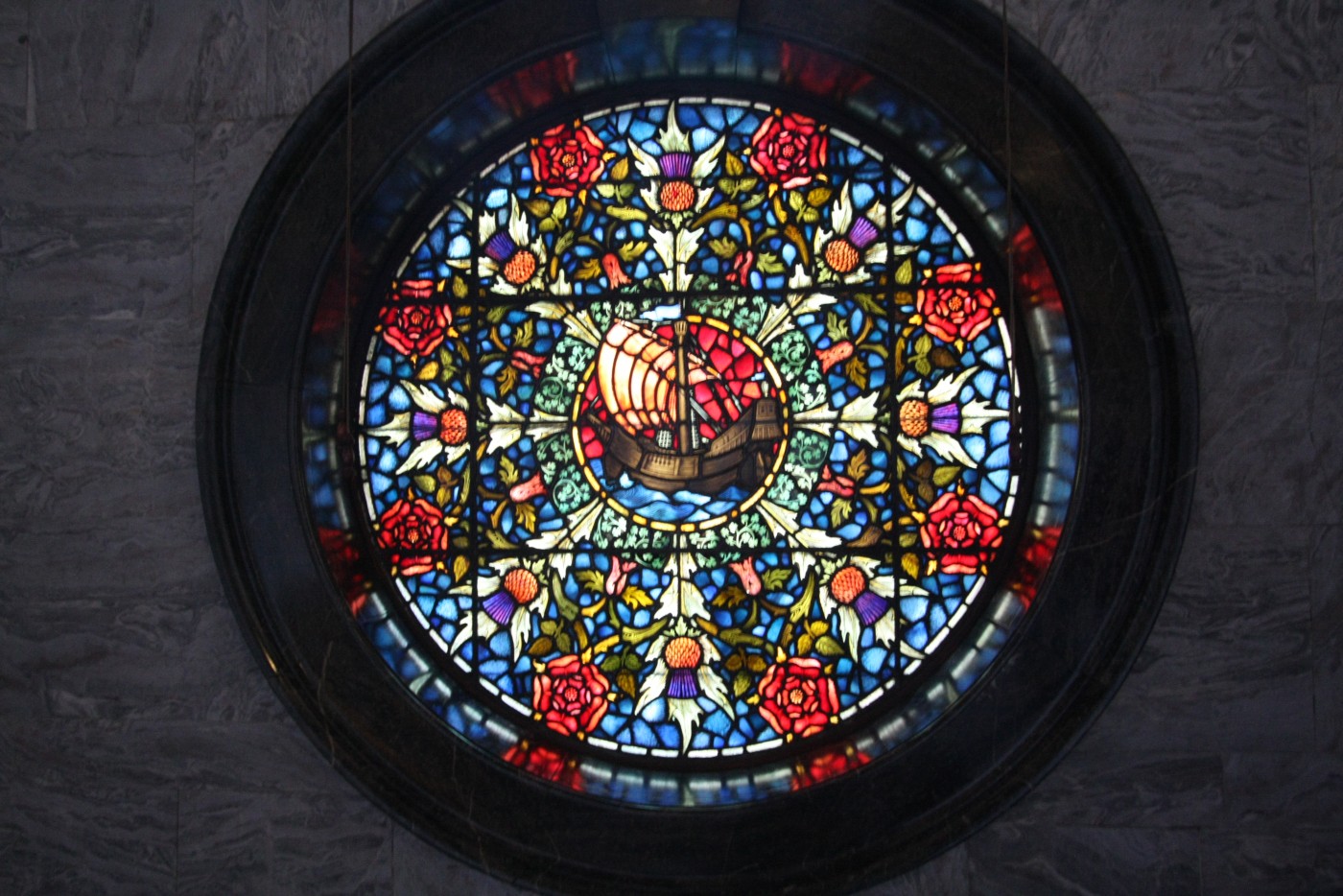Tuesday, August 14 2018
The General Committee Room is undoubtedly the foremost jewel in the crown of the Collcutt building; marble and mahogany adorn the lavish saloon, history bears its face in rich embellishments. These embellishments gaze up to a painted ceiling inspired by that of Michelangelo’s Sistine Chapel, a work that both literally and aesthetically transcends all below it. Gerald Moira is the man behind the masterpiece.
Moira was born son to a Portuguese diplomat-turned-miniature-painter and the half Spanish daughter of a diplomat in 1867. He began attending art classes at the age of 18 and joined the Royal Academy Schools in 1887, the year his Father died. Perhaps it was an excess of diplomacy that garnered him financial support from Queen Victoria (with whom his Father had worked), helping him to launch his career as a mural painter. A commission received from J. Lyons & Co. for decorations at the Trocadero restaurant in London brought him to prominence, prompting employment from the likes of the Old Bailey and, of course, Lloyd’s Register of Shipping.
By May 1903, Moira and an assistant had completed the 17-month process of transforming the barrel-vaulted ceiling of the General Committee Room. The row of paintings down the centre represent the four elements; Water, Fire, Air and Earth. The flanking panels signify the symbols of the zodiac, while the outermost illustrate celestial bodies, seasons and divisions of the day. Framed with gold, these paintings are adorned with sybils and prophets, a staple of the Sistine Chapel - Moira was just one of many late 19th century artists who embraced a renewed interest in Renaissance art.
Step out onto the first-floor landing and it soon becomes clear that Moira’s presence is apparent throughout the building. The arched roof is patterned with his stencilled tulips (the same stencil design that can be seen above the stage at Wigmore Hall), and scrupulously complements the bronze frieze of Frank Lynn Jenkins and marble architecture of Thomas Collcutt. Proceed downstairs, and perhaps my favourite of his contributions to the building bathes you in light.
The Rose Window was installed for the building’s opening in 1901. This stained-glass window was designed by Moira, and is believed to have been made by James Powell & Sons. Set in a circular frame, English roses, Irish shamrocks, Welsh leeks and Scottish thistles radiate from the central image of a Galleon (perhaps a nod to his Mother’s roots - Galleons originated in Spain but were widely adopted by the rest of Europe during the 16th – 18th centuries). The window is stunningly striking when bright light finds its surface, a maze of intricacy and bold colours. It is more than decorative, however; one could see it as a symbol of unity across Britain and Ireland through the pursuit of exploration, as the intertwining of all cultures through a common goal. For me, this piece holds beauty on numerous levels.

The Collcutt building is an all-encompassing exhibit of the eclectic talents of Gerald Moira, as well as all the other artists / architects who made it possible. The building will be open to the public for the Open House London event on Saturday 22nd September 2018, so that you can see these works in the flesh (or rather the marble…). For more information about this event, follow the link.
To receive our monthly HEC newsletter, please sign up here.

